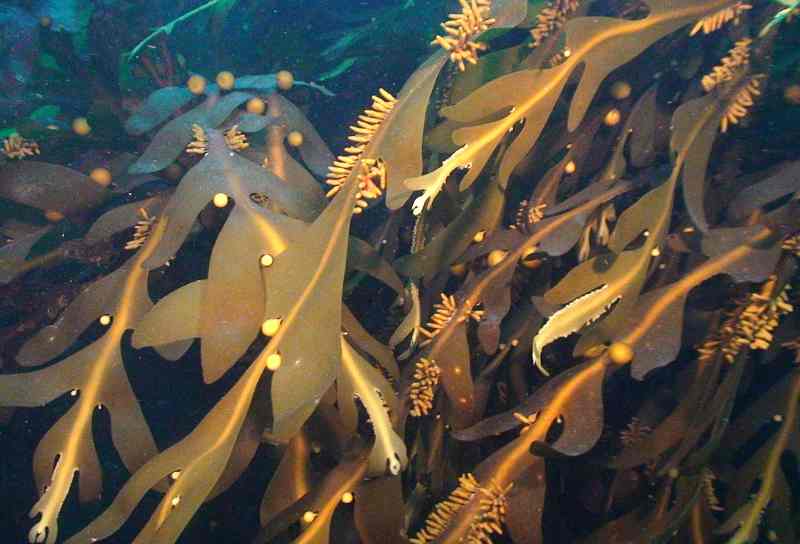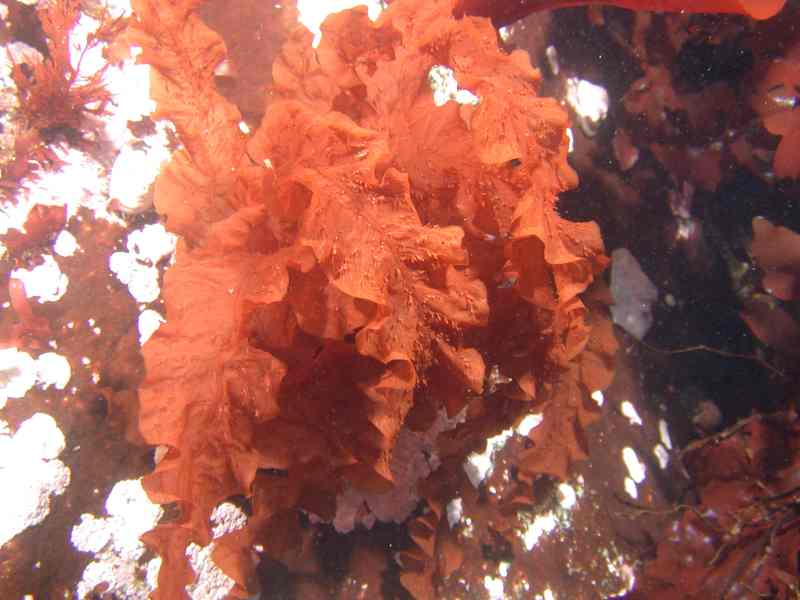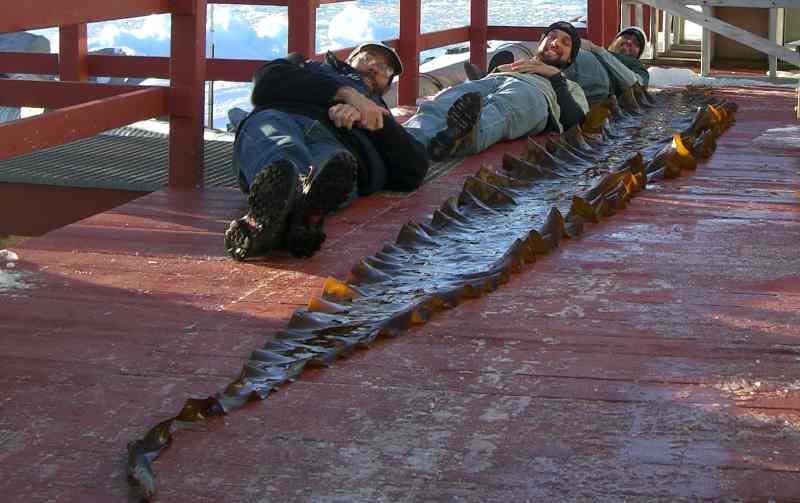
I gave the weekly science talk on Tuesday night, giving the staff and other scientists on station background about what everyone on our project is doing and why. In my introduction I used one of my favorite but always true set of lines: “Don’t let anyone tell you that there are no forests in Antarctica. There are! They are forests of macroalgae (seaweeds) beneath the sea right outside our station.”
Sabrina and others have written a bit about this in previous posts, but the macroalgae truly dominate the communities we dive into daily for our work. The total biomass (weight of the living algae) per unit area of the bottom is comparable to what one would find in a giant kelp forest in California or other parts of the world.
Algae come “color coded” because of different combination of pigments that they use to capture light for photosynthesis. Some are green like the plants we are used to seeing on land, but macroalgae can also be brown like the one at the top of this post which I photographed a few years ago or red like the one in the photograph below from my colleague Bill Baker.

It is the browns that make up most of the forests in terms of biomass, becoming absolutely huge. One, called Himantothallus grandifolius, forms blades that can be 45-50 feet in length and nearly 3 feet wide. A photograph Maggie took of one smaller than that but still huge, which was longer than the combined height of two of my former graduate students (Craig Aumack and Philip Bucolo; both tall guys) and me is below.

The reds are not as important in terms of biomass but there are a lot more species of them here, so they are important in terms of the total community diversity. Still photographs just do not capture these macroalgal-dominated communities. Video does not either but comes closer. The video below that I made for UAB in Antarctica some years ago captures the magnificent brown algae as well as I can. (Sorry about the hokey commentary.)